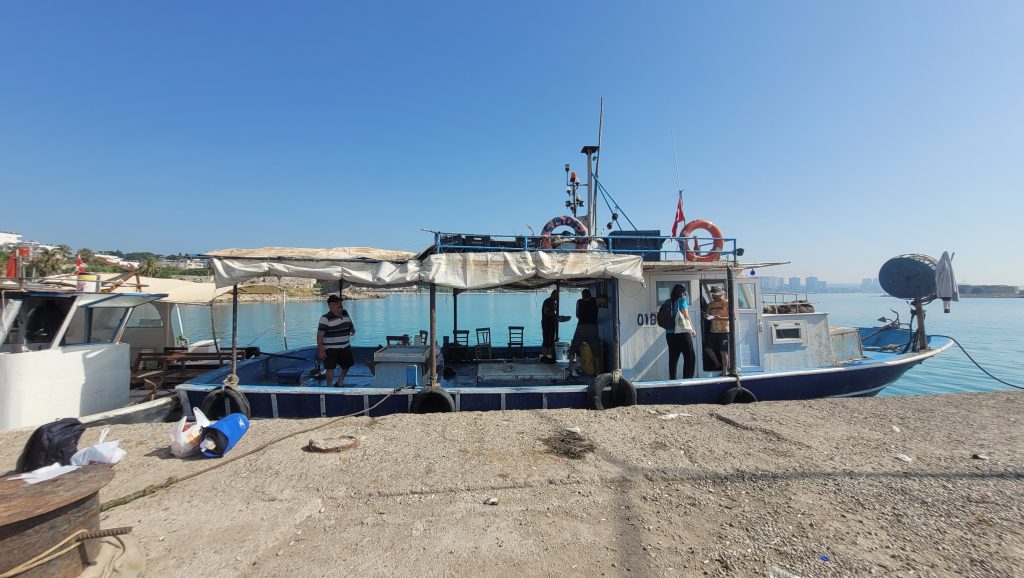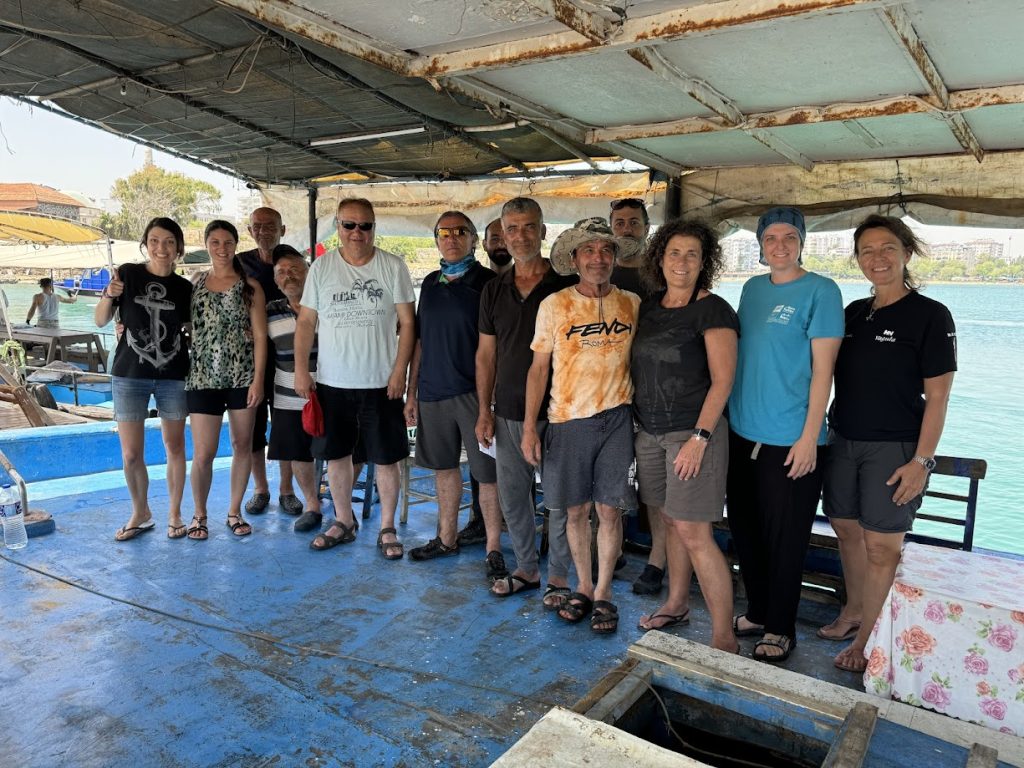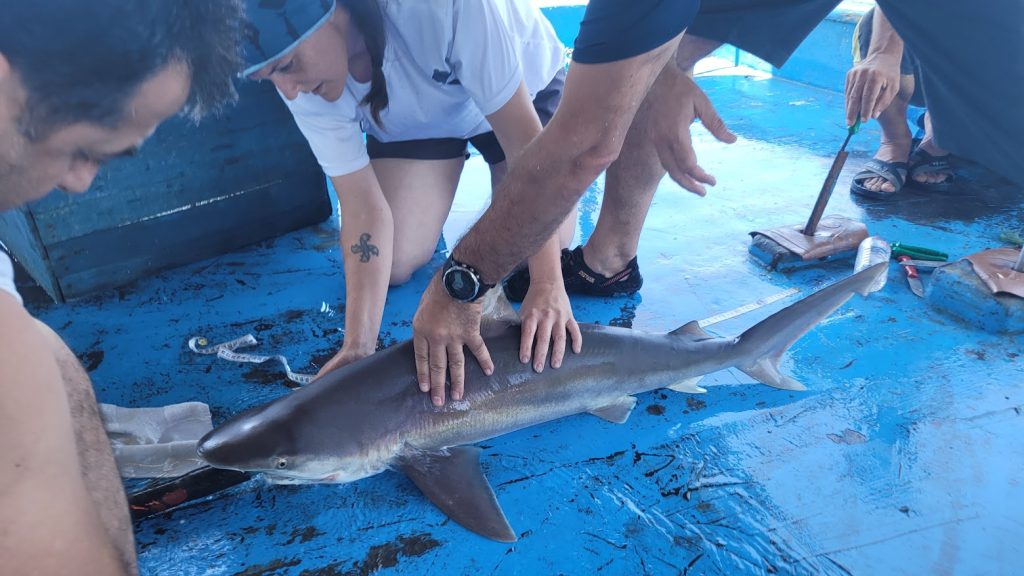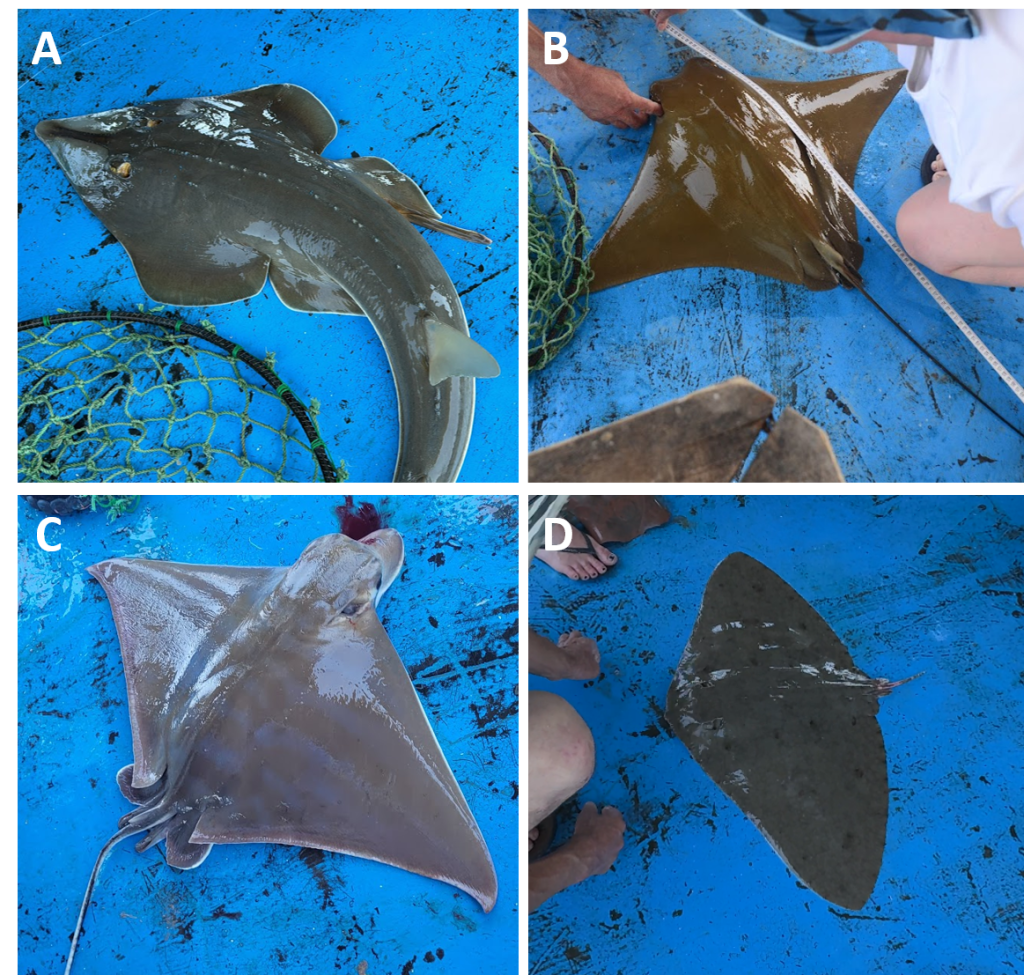Our first shark tagging mission took place in Yumurtalik Bay, Gulf of Iskenderun (southeast Türkiye) in June 2024, with local co-organization led by Prof. Nuri Başusta (Faculty of Fisheries, Firat University). Since this location was recently described as a major breeding and nursery ground for sandbar sharks (Carcharinus plumbeus), our aim was to catch some individuals and tag them with satellite tags to track their movement during several months and produce very precious information to the scientific community in the urgent context of biodiversity conservation.
This campaign was conducted in the southeast of Türkiye aboard a traditional fishing vessel with Croatian, Italian, French, and Turkish scientists on board. Six sandbar sharks (C. plumbeus) and over a hundred rays from four endangered species – the Lusitanian cownose ray (Rhinoptera marginata), the spiny butterfly ray (Gymnura altavela), the bull ray (Aetomylaeus bovinus) and the common guitarfish (Rhinobatos rhinobatos) – were caught using longlines. They were brought aboard to be measured, their sex and reproductive status identified, tissue samples collected, and then quickly released.


Traditional fishing boat used during the mission and the team on board, comprised of researchers and fishermen.
Among the six sandbar sharks observed, one individual was large enough (> 100 cm) to be tagged. A MiniPAT (Wildlife Computers, USA) device was successfully attached behind its dorsal fin. This archival satellite device records and stores the shark’s locations and is programmed to pop up at the surface after a designated period (or earlier if it detaches prematurely). Once at the surface, the device transmits all recorded locations via Argos satellites.
Deployed on June 11, 2024, the tag detached on July 31, 2024, allowing for 51 days of tracking. During this period, we observed that this young male remained close to the Gulf of Iskenderun. This marks the first successful transmission of valuable data on the movements of this endangered species, as listed by the IUCN Red List, in the Mediterranean Sea.

A young sandbar shark (Carcharinus plumbeus) aboard the fishing vessel used during the tagging mission in Yumurtalık Bay, Türkiye. The arrival of seawater through the pipe helps to continue oxygenating the animal.

Simultaneously, this mission facilitated the opportunistic collection of valuable sightings of rays. The majority of these rays were sexually active, indicating that the area is significant for the reproduction of these fragile species. All these opportunistic observations will contribute to updating our CIESM Guide of Skates and Rays of Mediterranean.

Pictures of the four ray species opportunistically observed during the survey at sea (Yumurtalik Bay, Gulf of Iskenderun, Türkiye). A: common guitarfish (Rhinobatos rhinobatos); B: Lusitanian cownose ray (Rhinoptera marginata); C: bull ray (Aetomylaeus bovinus); D: spiny butterfly ray (Gymnura altavela).
“How to unhook and release sharks and rays” (Life EU Shark / CIESM)